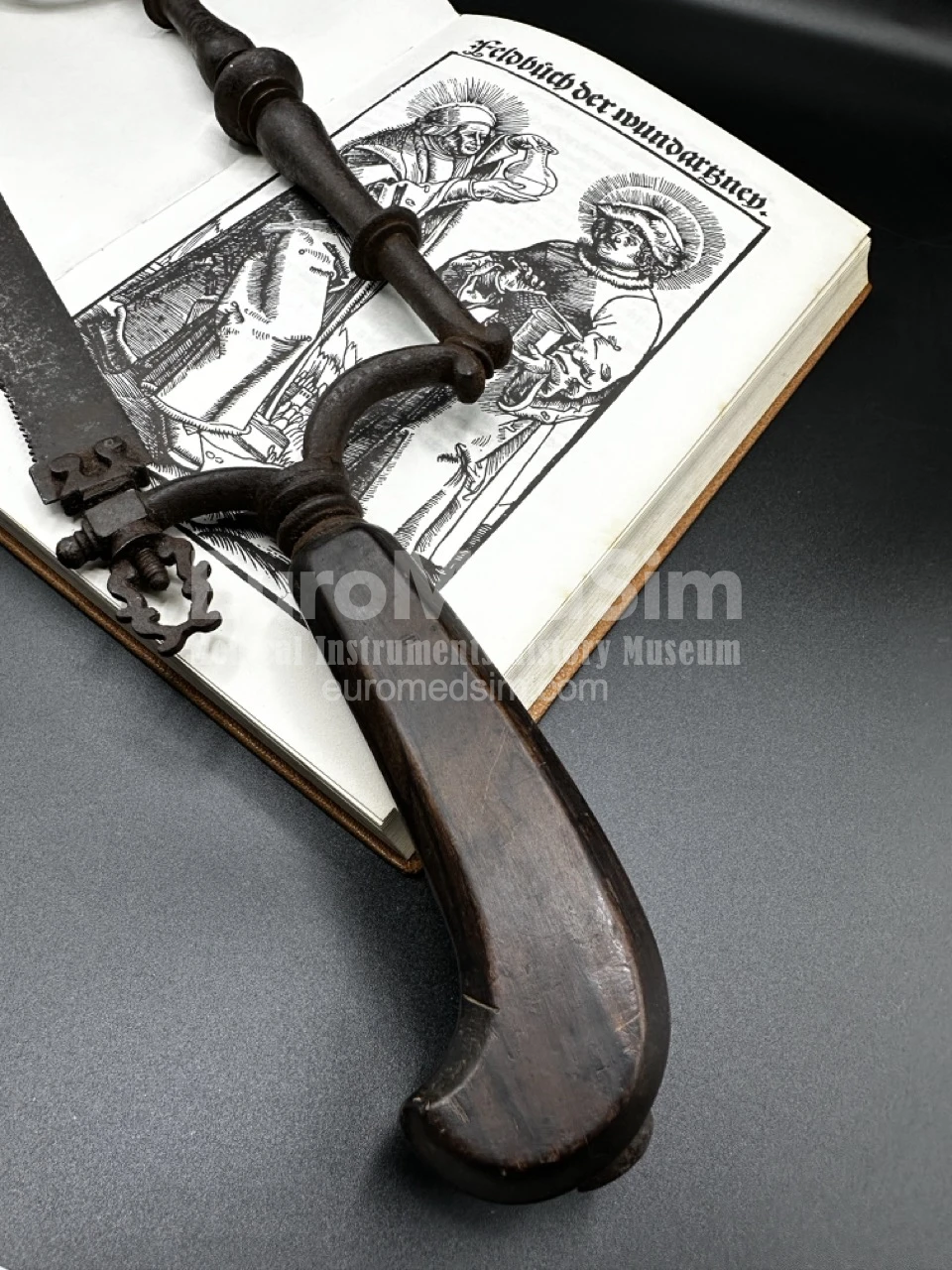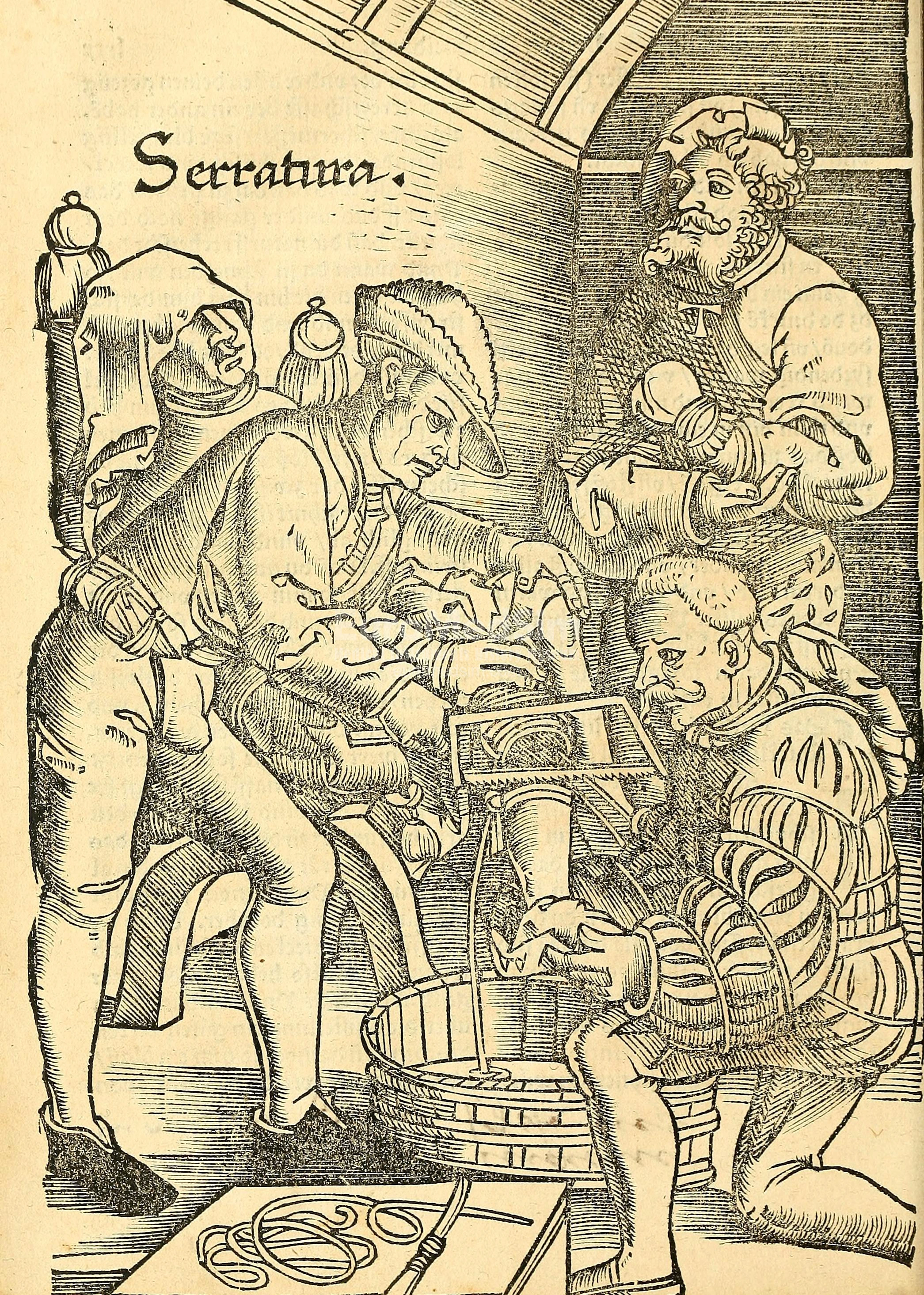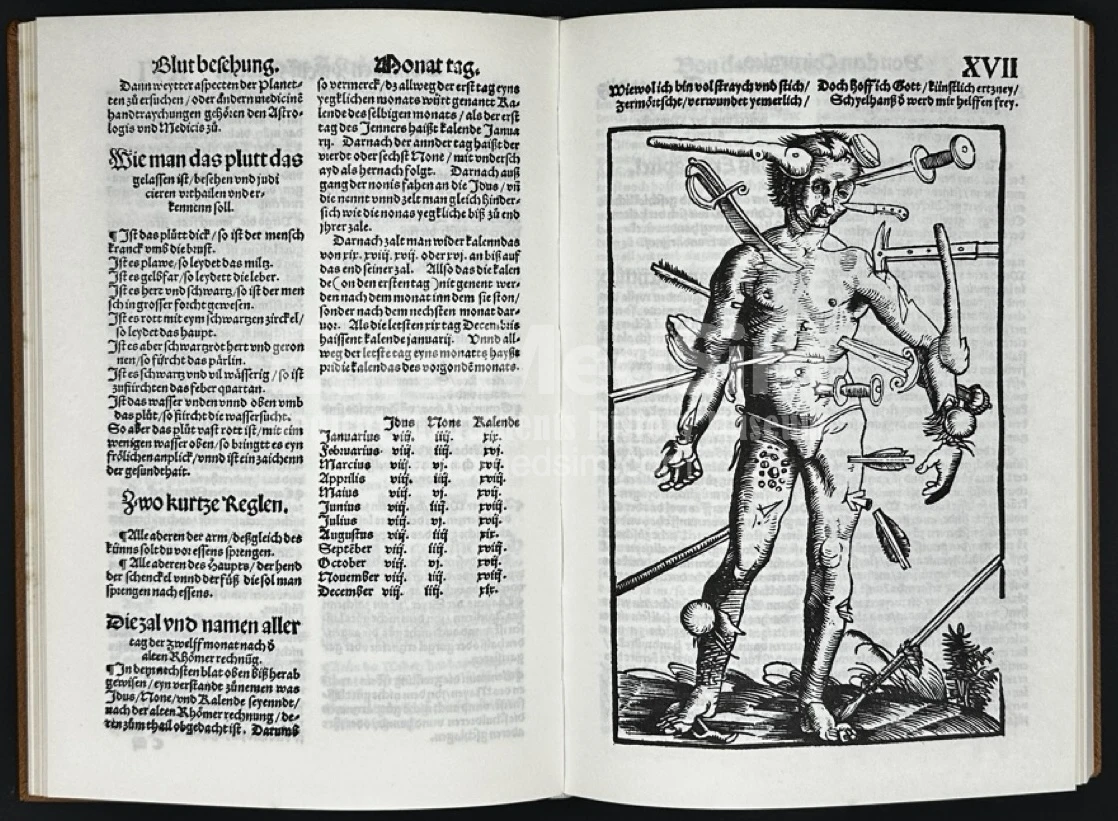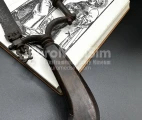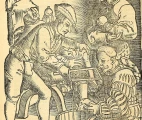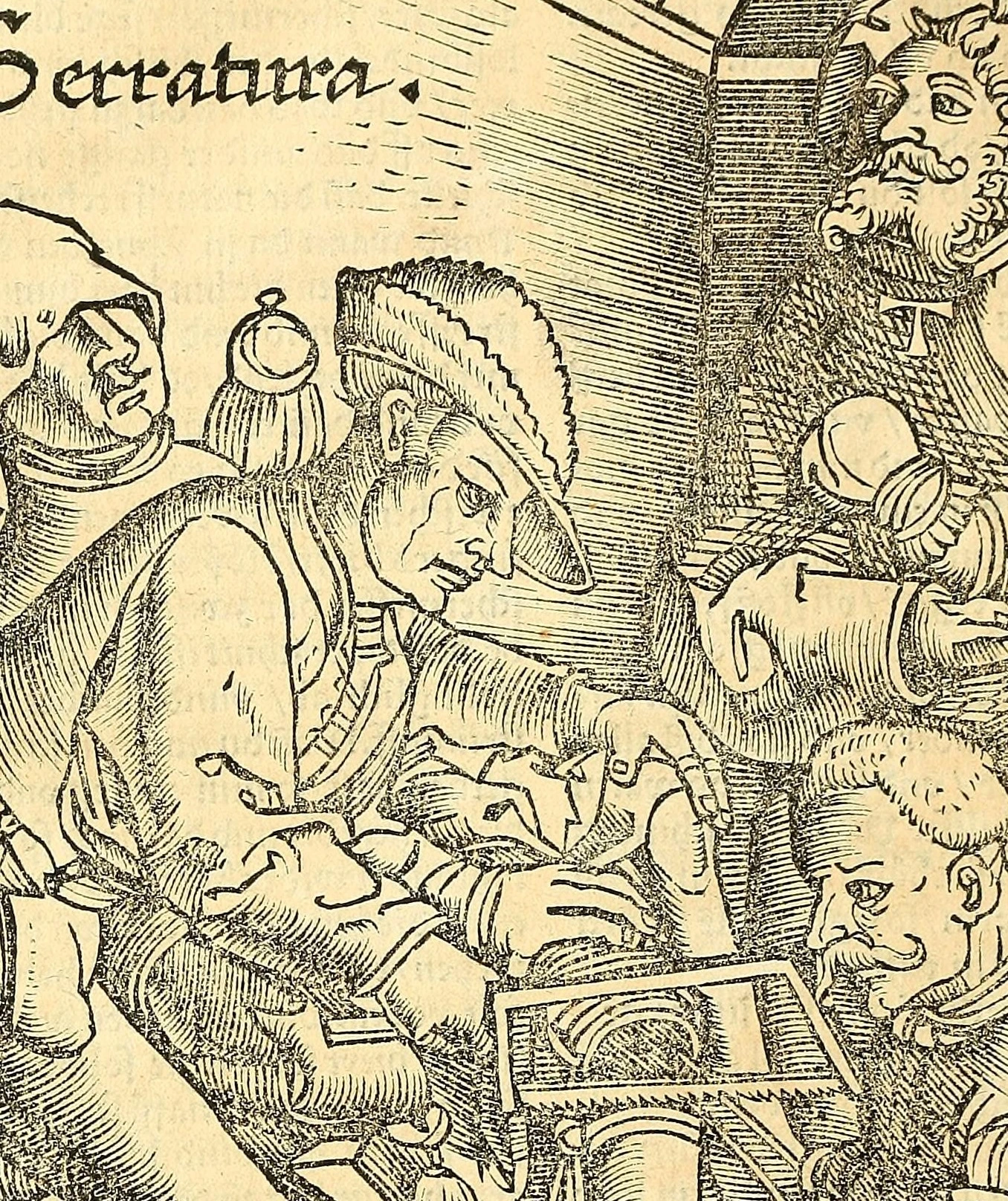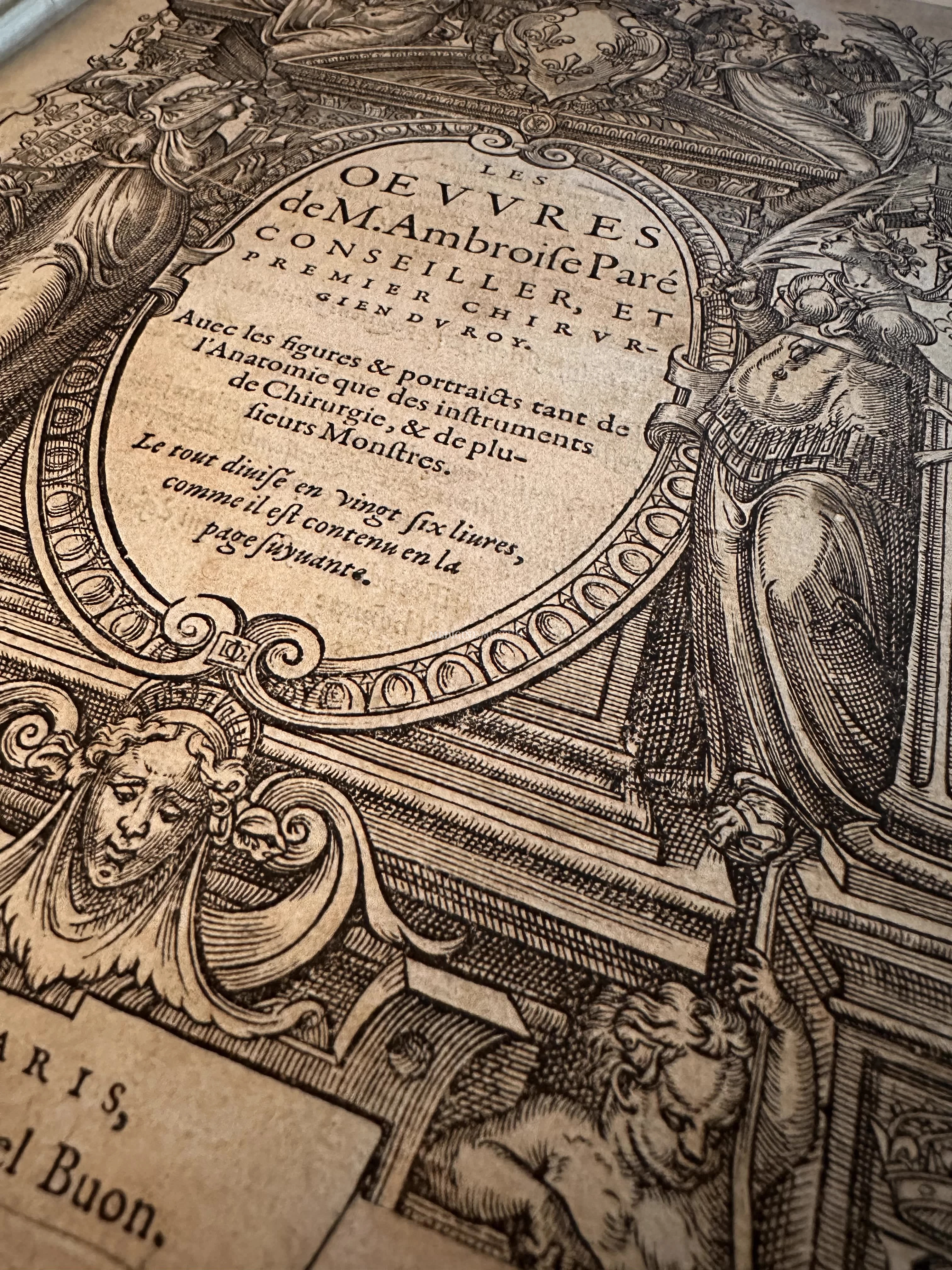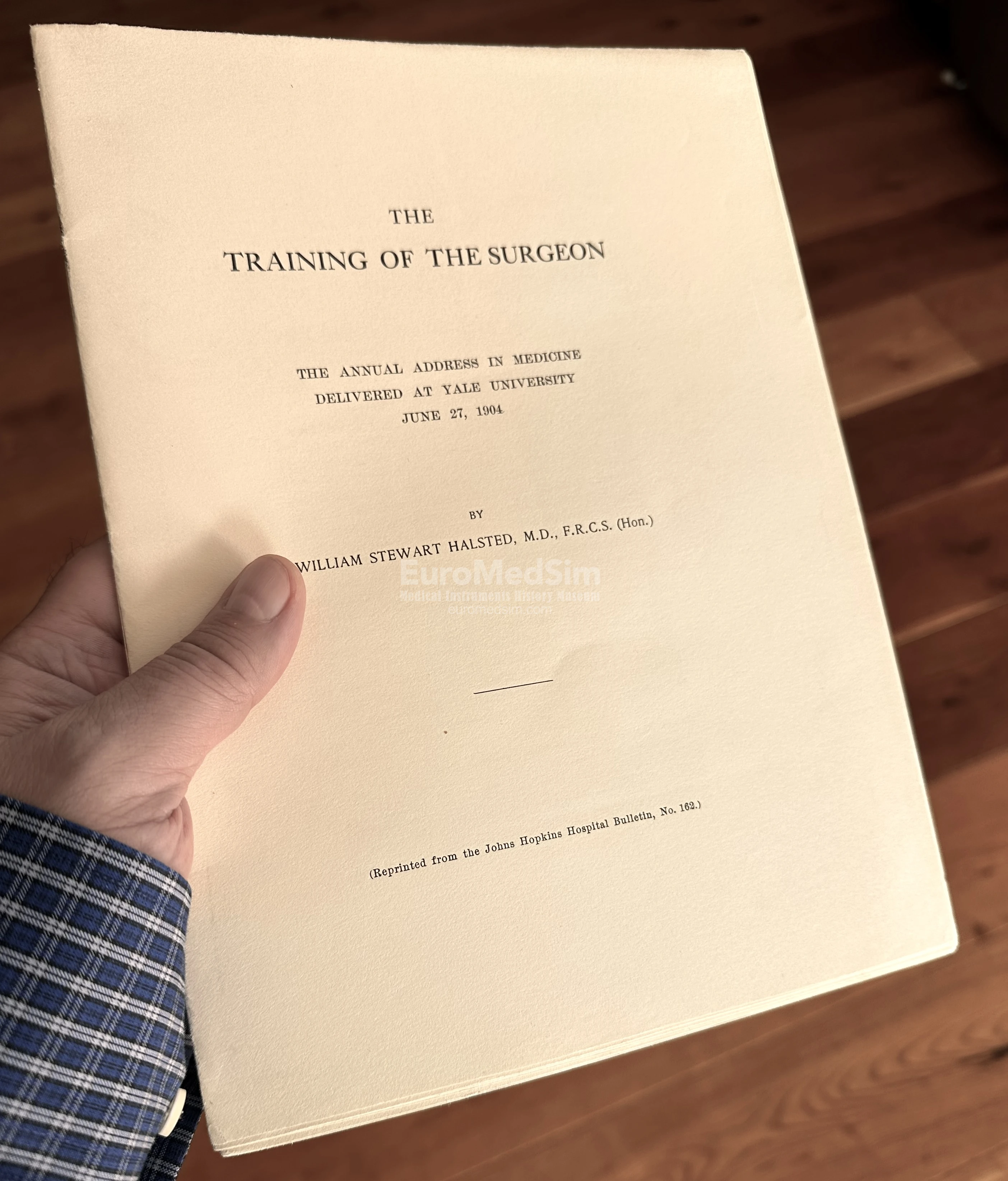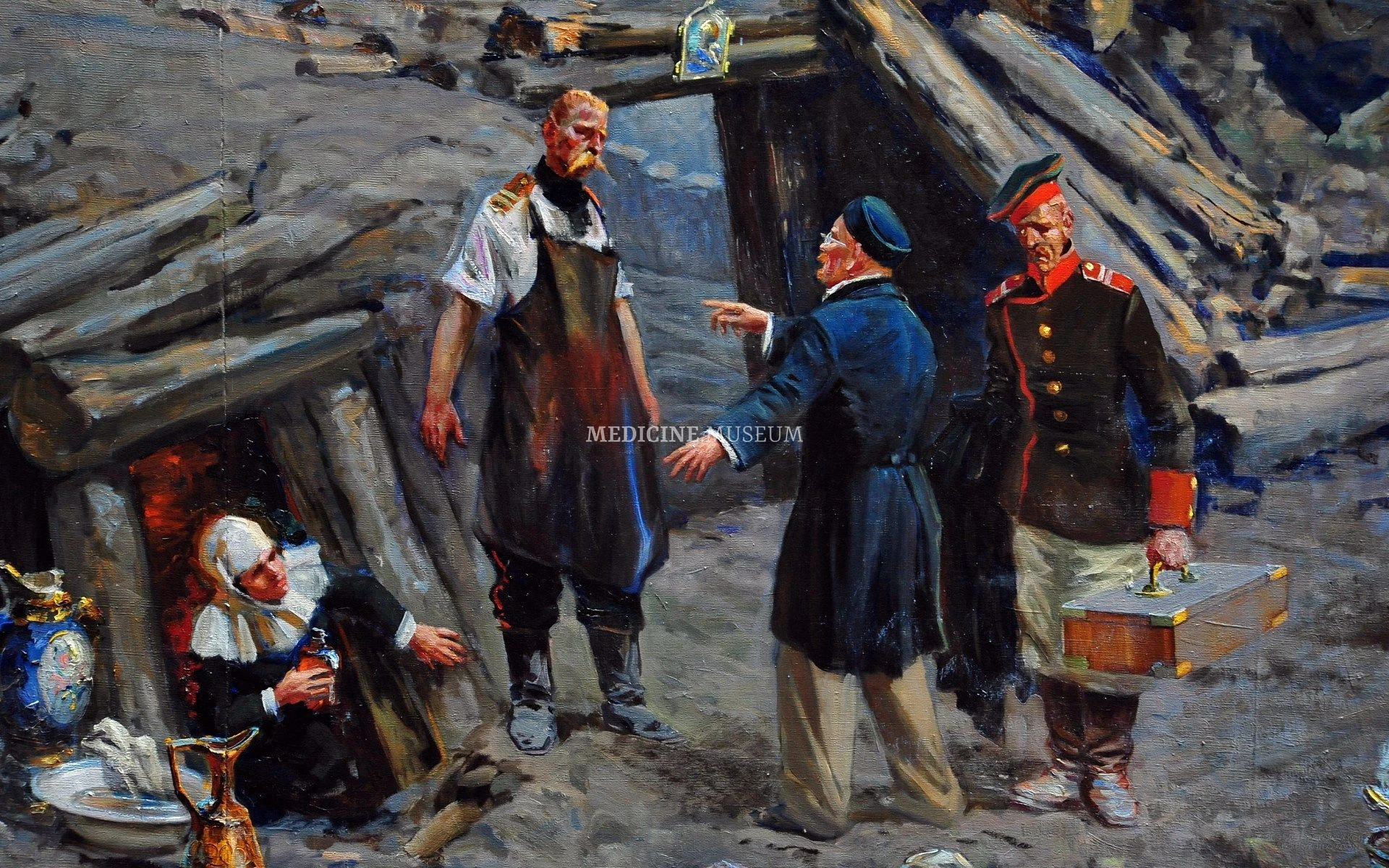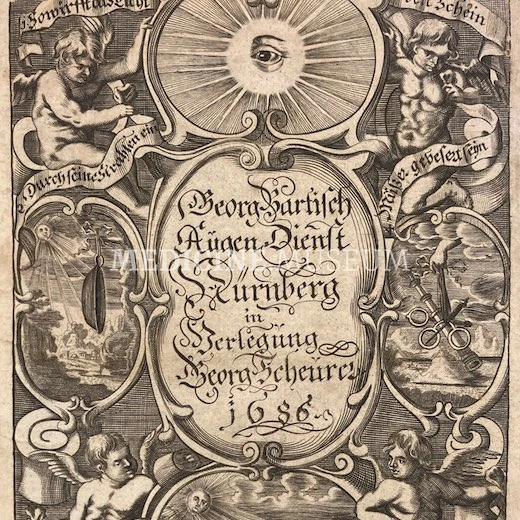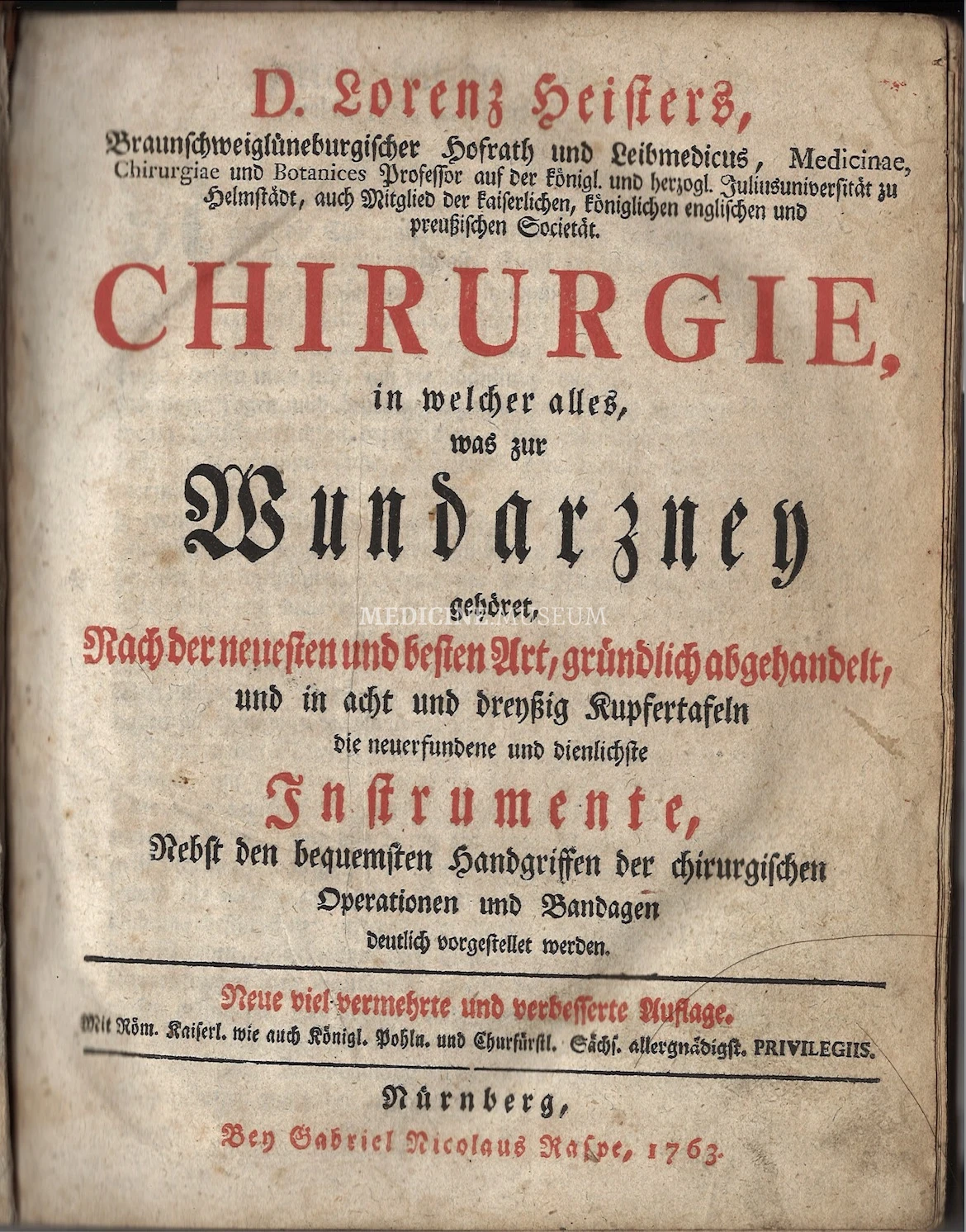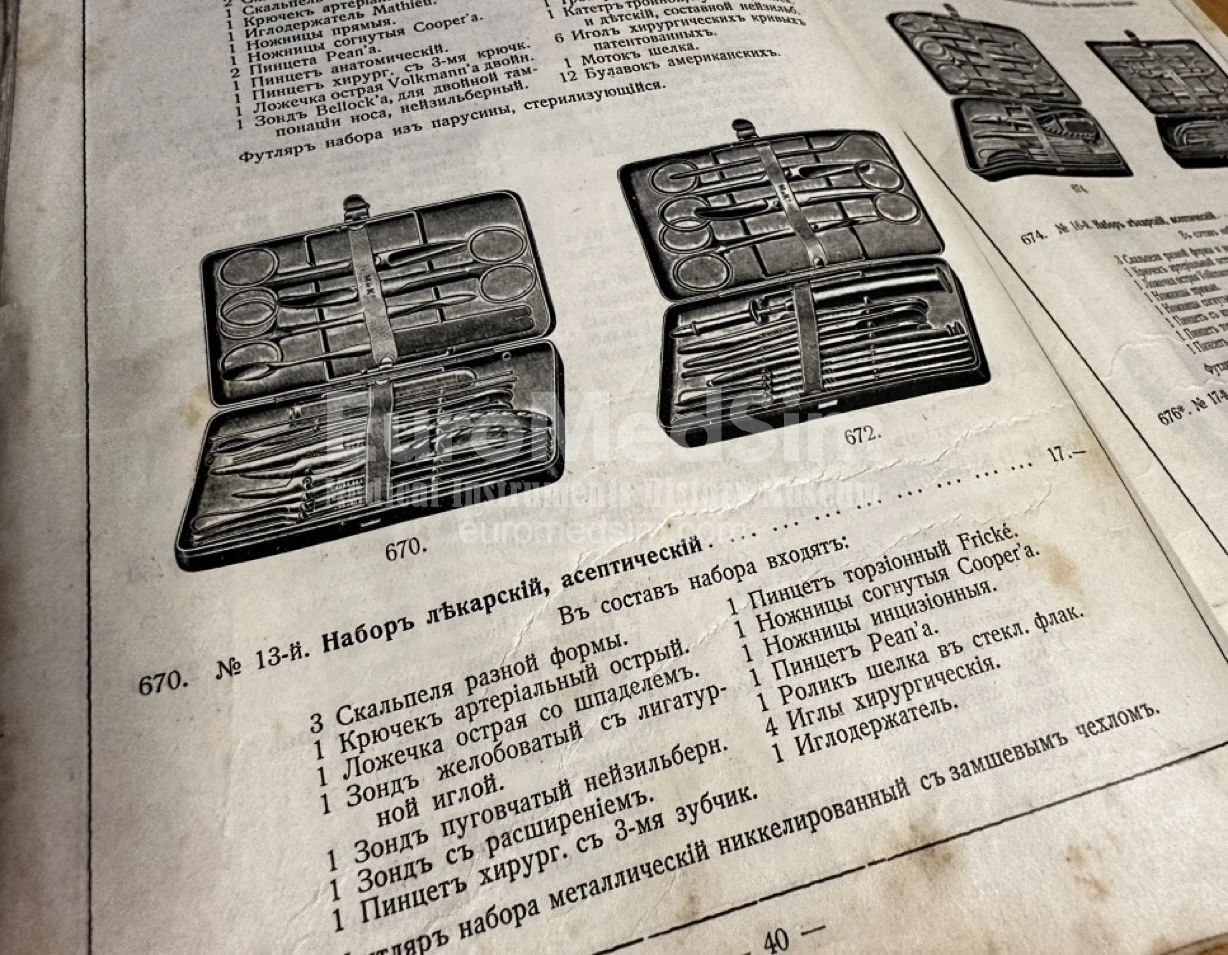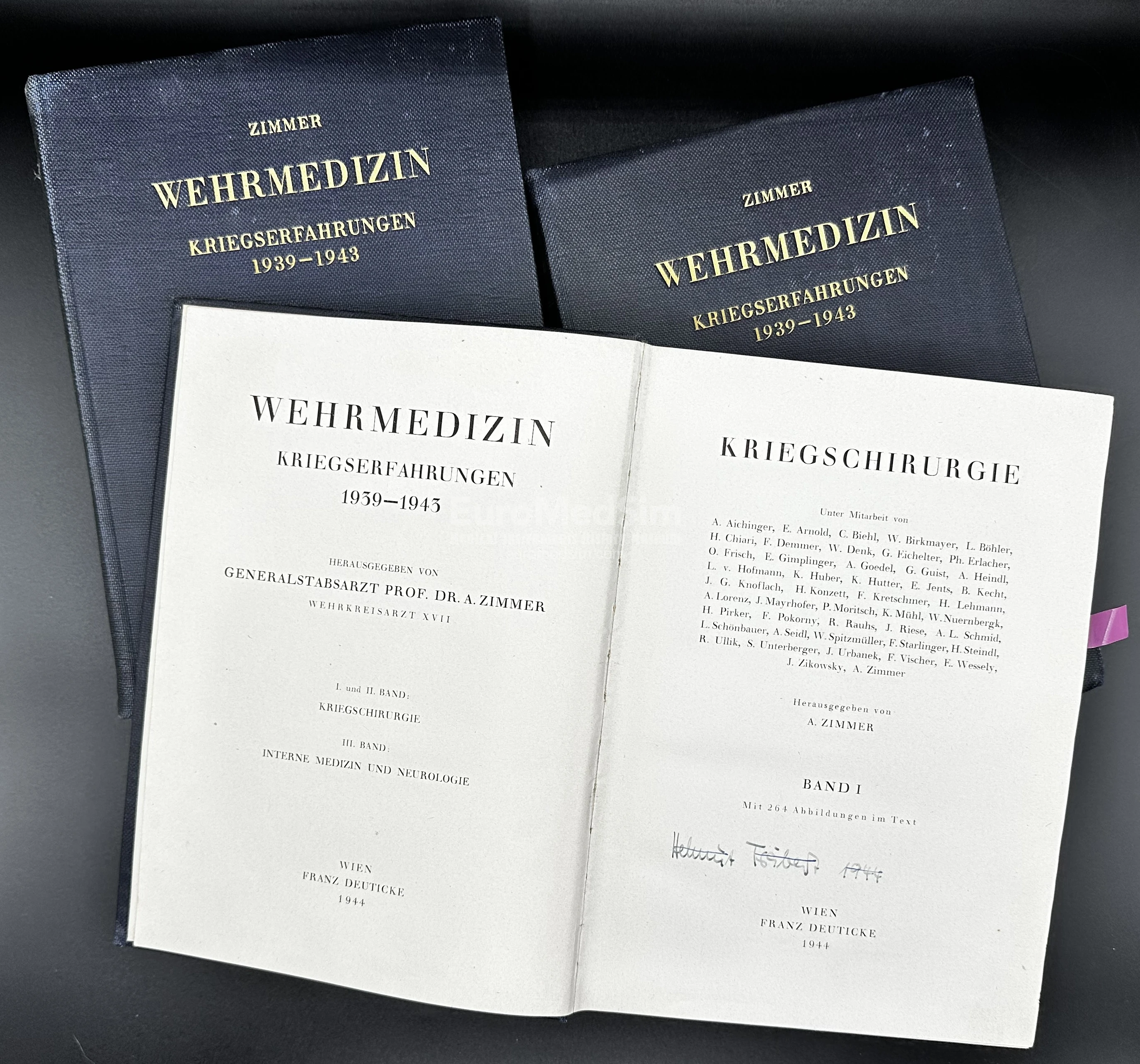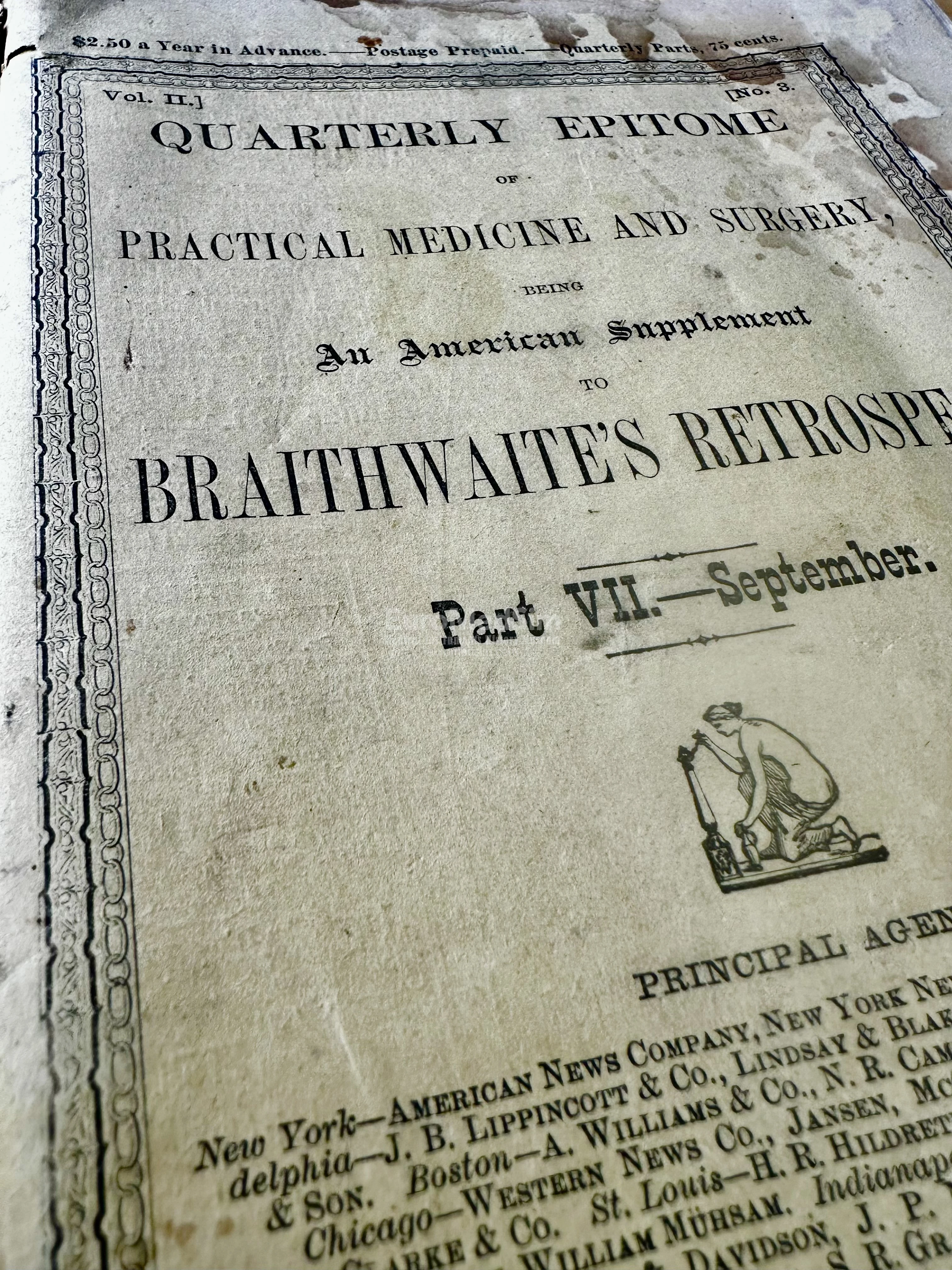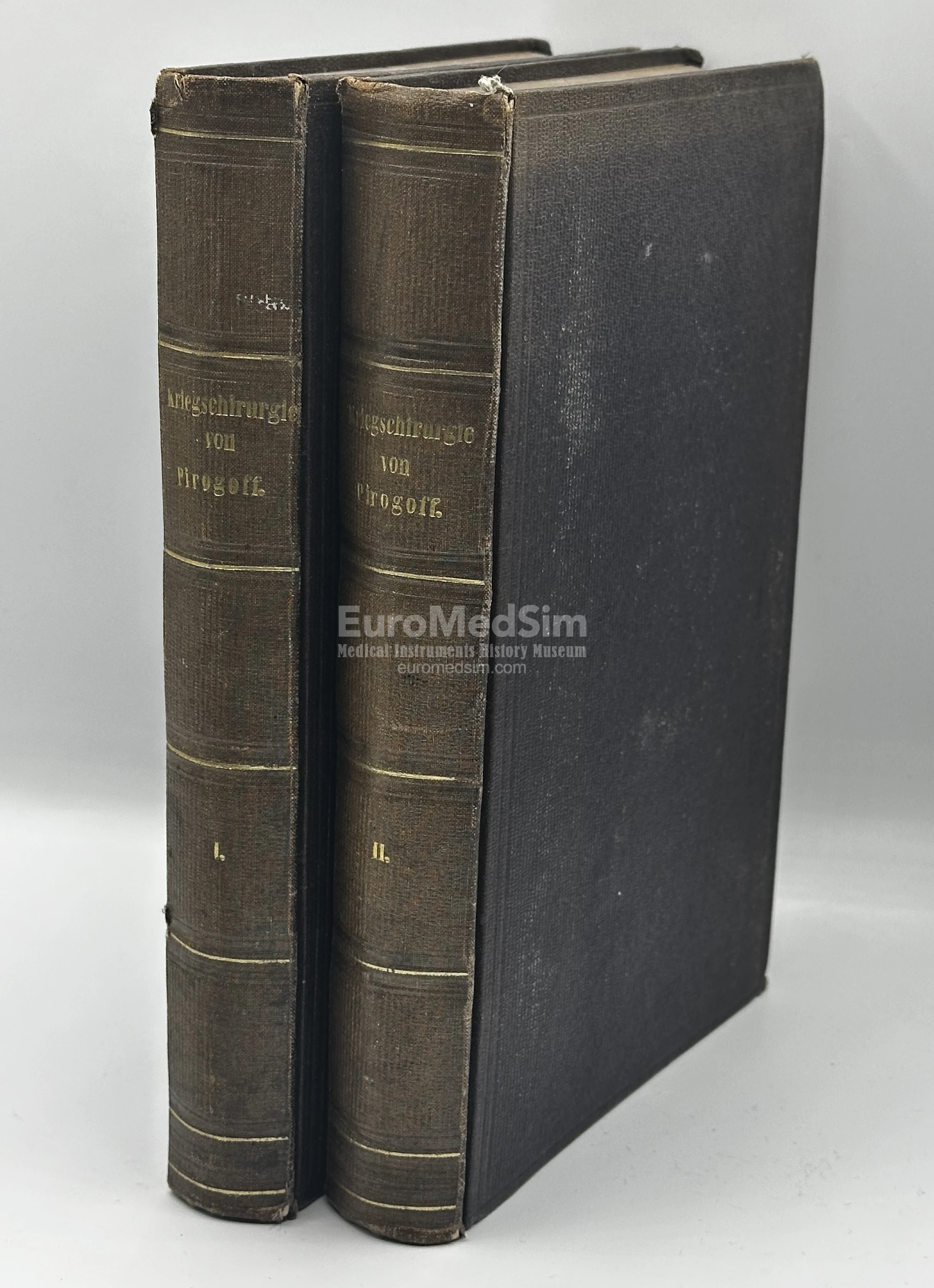Feldtbuch der Wundartzney
Description of the object
The present book is a facsimile print of the first edition of the Feldtbuch der Wundartzney by Hans von Gersdorff. The facsimile is published in 1976 by Antiqua-Verlag, Lindau/B. Description: 84 Bl. [zweiseitig bedr.] Illustr. 26 cm (in 4to). ISBN: 9783882100006, 3882100001. OCLC Number / Unique Identifier: 74339868.
The original manuscript used for this facsimile comes from the Herzog August Library (?) in Wolfenbüttel, Germany. This library houses one of the most important collections of old prints and manuscripts in Europe. Nice clean copy with some foxings.
Provenance
Acquired from Antiquariat Bernard Richter, Baden-Baden, Germany in 2025.
Essay on Feldtbuch der Wundartzney
Hans von Gersdorff (ca. 1455-1529), Feldtbuch der Wundartzney (Field Book of Wound Medicine). The first edition the book was published by Johannes Schott, 1517 in German-speaking Straßburg (today's Strasbourg in France). Folio (262 x 192 mm), 42 lines plus headline, double column, Gothic type. Contains the full-page woodcut illustration of St. Cosma and Demian performing uroscopy on the title page, 27 woodcut illustrations in text (21 full-page and 6 in text) and 2 folding plates. Woodcuts are attributed to Hans Wechtlin.
“The practical nature of Gersdorff's book and its fine illustrations caused it to become very popular and it was frequently referred to, widely quoted and freely plagiarized. The work went through at least twelve editions between the time of its first publication in 1517 and the early seventeenth century. The book also appeared in several Latin and Dutch editions” (Heirs of Hippocrates, 149).
The Gersdorff's work quickly gained widespread acclaim, became widely known across Europe and served as a key surgical reference for many years. It has endured more than thirty editions for nearly a century after the first publishing in 1517. The book is particularly distinguished for its numerous woodcut illustrations, the most of which extend across full pages. They depict a variety of surgical procedures, including trepanation, amputation (a procedure which has been performed by Gersdorff himself over 200 times), bone-setting, and application of traction bandages, as well as diagnostic techniques, such as leprosy examination and uroscopy. The trepanation and amputation consider to be the world first printed illustrations of these operations. The book offers detailed depictions of surgical instruments, including the earliest known printed catalog of the essential instrument set used by field surgeons of that era. Its particular significance lies in its comprehensive and practice-oriented discussions on life-saving procedures, presented in clear, accessible language. By using simple, vernacular terms, it made this crucial knowledge available to German-speaking lower-class healthcare practitioners like barbers, barber-surgeons, trauma-surgeons, and surgeons (in German: Barbier, Schärer, Wund-Arzt, Chirurg) who lacked proficiency in classical scientific languages.
Content and Influences
The first edition of the handbook includes four treatises (tractate). In the first treatise, von Gersdorff deals mainly with anatomy, which, following Guy de Chauliac, is divided into twelve chapters. The thirteenth chapter is introduced by an engraving representing the ‘counterfeit bloodletting manikin’ (Contrafacter Lasszman18) and deals with the practice of phlebotomy. The first book ends with a description of the twelve zodiac signs and their features and with a table containing, ordered according to the traditional Roman numeration, the names and numbers of days of each month. In the second book – preceded by an illustration showing the ‘Wound Man’ – the author presents the different pathologies (mainly traumata, but also infectious and oncological diseases) which can be treated surgically, as well as their therapies. The seventeenth and eighteenth chapters of this treatise contain the 'antidotarium', that is, a collection of recipes for the various remedies a surgeon might need. The third book is completely dedicated to leprosy and other dermatological pathologies. The fourth and last book of the first edition of the text is composed of three Latin-German glossaries on anatomy (Vocabularius Anathomie), pathology (Vocabularius Infirmitatum), and on the herbs used in pharmacopoeia (Vocabularius erbarum) – also useful and practical information for German-speaking medical specialists to help them in communication with highly educated medical colleagues.
Thus, at least in one third the work there are quotes from the Chirurgia Magna and Chirurgia Parva by medieval Guy de Chauliac (1300–1363), including a German translation of his anatomical descriptions in the chapters on anatomy and texts on the treatment of ulcers and other dermatological diseases [Chiara Benati, 2017]. Additionally, the section on bloodletting (Chapters 13–16) is a German translation of the corresponding Latin passages found in the Fasciculus Medicinae, printed in Venice in 1491 based on text of from Johannes de Ketham (1415–1470) and Nicholas of Salerno. The chapters on wounds and fractures are based on the works of Rogerius (before 1140‒ca. 1195), with some references to Lanfranc of Milan (ca. 1250‒1306), Ortolf of Bavaria (d. before 1339), and Hieronymus Brunschwig (ca. 1450‒ca. 1512). Some researchers claim that about 160 authors are mentioned within the text, among whom are such authorities as Galen, Avicenna, Albucasis, and Hippocrates.
The Feldtbuch der Wundtarzney was addressed to the battlefield surgeons who had to manage wounds, traumas, diseases and infections with limited time and resources. As a result, the book includes (especially in its later publications edited by Schott and Ryuff) several sections not only on surgical techniques and instruments but also on medical astrology (natural astrology), chiromancy (palm reading), and physiognomy, which were considered highly practical and valuable at the time of limited medical resources. It therefore incorporates several elements influenced or quoted from reputable sources.
Spelling
The title Feldtbuch der Wundartzney appears in modern catalogs in various spellings, such as Feldtbůch der wundtartzney (Feldtbůch has letter "u" with ring above — see footnote at the bottom, and wundtartzney is written with a lowercase letter and with the addition of a second letter “t”, as it was printed in 1517 in the first edition), Feldtbuh der Wundartzney (without "c"), Feldtbuch der Wundt Arzney with second word divided in two parts, or Feldtbuch der Wundarzney (missing both "t"). In fact, multiple historical copies clearly show variations in spelling – depending on the city, year and publisher: Harvard's copy of 1528 has no "t" in Wundarzney and Wellcome's copy of 1530 again becomes a "t". According to modern German grammar, the title would be written as Feldbuch der Wund-Arznei.
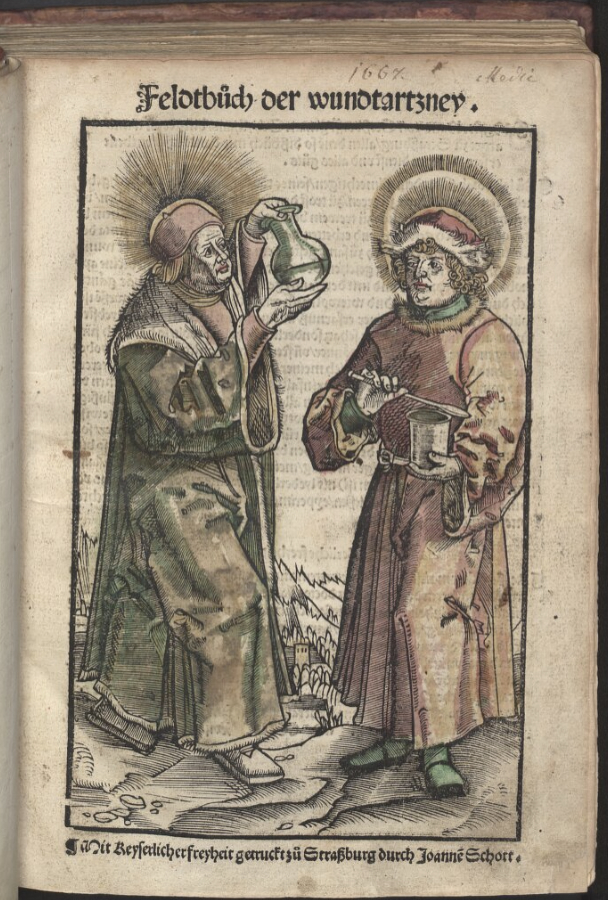
Title page of the 'Feldtbuch der wundtartzney' by Hans von Gersdorff, Straßburg : Schott, 1517. München, Bayerische Staatsbibliothek -- Rar. 1457
Folding plates on Skeleton and Visceral Anatomy
The two folding plates, attributed to Hans Wechtlin, are seldom found in the majority of the remaining copies. Originally, these plates were designed as detachable sheets intended for display on walls. Although they were later included in the book, many owners preferred to keep them separate, hanging them on the wall as entertaining pictures or as a kind of certificate of their scientific affiliation.
The first plate, known as the 'viscera-manikin,' presents a male figure extending from the head to below the knees, with the thoracic and abdominal cavities exposed. It includes seven smaller figures illustrating the brain, cranial cavity, and tongue, each labeled in German. At the top, the inscription 'Anatomia corporis Humani 1517' ('Anatomy of the human body') is engraved, while beneath the plate, German verses appear alongside the statement 'Gedruckt zu Strassburg durch Joannem Schott' ('Printed in Strasbourg by Johannes Schott').

The 'Viscera-manikin' fugitive sheet. Source: National Library of Medicine, NLM Unique ID 2246021R
The second plate depicts a skeleton in frontal view, its head slightly turned to the right, with arms hanging downward. The image is annotated with Latin names of bones. Above the plate, the text 'Anatomia aller Beynglyder des menschen' ('Anatomy of all human limbs (parts)') is printed, followed by 24 verses offering moral reflections on death, including: 'Der Todt binn ich grausam ungstalt, Vnd doch des lebens vfenthalt [...] Eer Gott, dein acht, die welt vernicht. Dein seel ewig, der leib verblicht' ('I am Death, cruel and deformed, And yet the sustainer of life [...] Honor God, consider Him, the world fades away. Your soul is eternal, the body perishes'). The illustration of the second fugitive sheet is given below in the List of full-text online scans.
“Fugitive sheets (fliegende Blätter) with pre-Vesalian anatomy, representing whole figures with the names of the parts or explanatory texts, were published either on a single broadside or on two sheets, each with printing on one side only. In this period several appeared. They were generally intended to disseminate popular information, or to give instruction to barbers and surgeons, and were probably to be hung up in their anterooms. [...] They were, in the nature of things, predestined to be scattered and lost, and, on this account, are now all of them exceedingly rare” (Choulant-Franck, p. 156).
References
- Carlino A., Paper Bodies: A Catalogue of Anatomical Fugitive Sheets 1538-1687, London 1999, pp. 90-91;
- Choulant-Franck, History and Bibliography of Anatomic Illustration, Chicago 1920;
- Cushing G-200;
- Durling 2059 (1517 ed.);
- Garrison/M. 5560. "It includes the first printed picture of an amputation”;
- Grolier/Norman Medicine 14;
- Lilly Library, p.19;
- NLM/Durling 2059 (lacking the 2 folding plates);
- Garrison & Morton 5560 (1517 edition);
- Heirs of Hippocrates, 149 (1530 edition);
- Herrlinger, History of Medical Illustration, pp. 140-43;
- Hirsch/H. II, 728f: "Gersdorff ... far superior to his hitherto known German predecessors in general and medical education”;
- Philobiblon, One Thousand Years of Bibliophily, no. 98.;
- Stillwell 387;
- VD16, G-1625 (Verzeichnis Deutscher Drucke des 16. Jahrhunderts);
- Waller 3506 (calling for one plate only);
- Wellcome I, 2760 (1527 edition), 2761 (1530) and 2762 (1540). In the online-collection the scans of the editions of the years 1528 and 1530 are presented.
Editions and Publications
First edition
In its first edition the book was printed in Straßburg (today's Strasbourg) by Johannes Schott, 1517. Folio (262 x 192 mm), 42 lines plus headline, double column, Gothic type. Contains the full-page woodcut illustration on the title page, 27 woodcut illustrations in text (21 full-page and 6 in text) and 2 folding plates. Woodcuts are attributed to Hans Wechtlin. The title page has an image of two physicians performing uroscopy.
The further editions of the Gersdorff's Feldtbuch
- After the first publication in Straßburg in 1517 by Johann Schott (1477-1548), the book was printed by the same publisher in 1526, 1527 (?), 1528, 1530, and 1535 (in 4to). Later editions have a title page depicting a field surgeon treating a soldier's head wound and his assistant against the backdrop of a blazing city and troops approaching the city walls. The woodcut with uroscopy has been moved to the text block of the book.
Editions in Straßburg in folio by Grüninger 1519 and Schott in 1540, 1542. The edition of 1540 was enlarged with two additional parts: the German translation of the work of Albucasis (Albucasi contrafayt) and the German version of the 'Chiromantia' by Jean d’Indagine. - Editions in Augsburg by Heinrich Steiner (Hainrich Stayner) in ca. 1530, 1532 and 1542 (in folio). The latest , third edition has 26 woodcuts, in folio (285 x 190 mm).
- Edition in Franckfurdt am Mayn by Hermann Gülfferichen, 1551 (4to, 264 x 176 mm. [4], 101 leaves, including title with large woodcut, printed in red and black, and 23 full page woodcuts in text, woodcut calligraphic initials and ornaments.).
- Edition in Frankfurt am Main in 1551 by Christian Egenolff was shortened by Walter Ryff in order to publish it in a new graphic form with the addition of some new illustrations taken from the works of Johannes Dryander, Konrad von Megenberg, and Mondino de’ Liucci. Other editions by the same publisher in 1556, 1576, 1598, 1606. The two last Frankfurt prints have the chapter on leprosy and do not include Latin-German glossaries.
- Edition in Frankfurt am Main, Vincentius Steinmeyer, 1606 (in 4to).
- Edition in Frankfurt am Main (Franckfurdt am Mayn) by Hermann Gülfferich, 1551. GERSDORFF, Hans von. Feldtbuch der Wundt Arzney... 4to (264 x 176 mm). [4], 101 leaves, including title with large woodcut, printed in red and black, and 23 full pages woodcuts, as well as woodcut calligraphic initials and ornaments.
- Dutch editions: Amsterdam by Cornelis Claeß in 1591, 1593, 1605; by Jacob Theunisz Lootsman 1651; and Amsterdam and Harlem by Jan Evertsz Cloppenburgh in 1622
- Latin editions in Straßburg 1542 and Frankfurt am Main 1551.
Full-texts scans of the book available online
- Feldtbůch der wundtartzney. Hans von Gersdorff, 1517. Straßburg, durch Joanne Schrott. München, Bayerische Staatsbibliothek, Munich, Germany.
- Feldtbuoch der Wundtartzney. Meister Hans von Gerßdorff genant Schylhans, 1517. Straßburg, Joanne[m] Schott. [4], XCV Bl. Illustrations. Missing: title page, "Wound Man" and some other woodcuts. Collection of the Heidelberg University Library, Baden-Württemberg, Germany.
- Feldbuch der Wundartzney newlich getruckt, vnd gebessert... Hans von Gersdorff, 1528. Published in Strasbourg by Johann Schott. The collection of the Francis A. Countway Library of Medicine, Harvard School of Medicine, USA. This copy has 1 of 2 folded woodcuts, a skeleton in frontal view with tears and lost upper part.
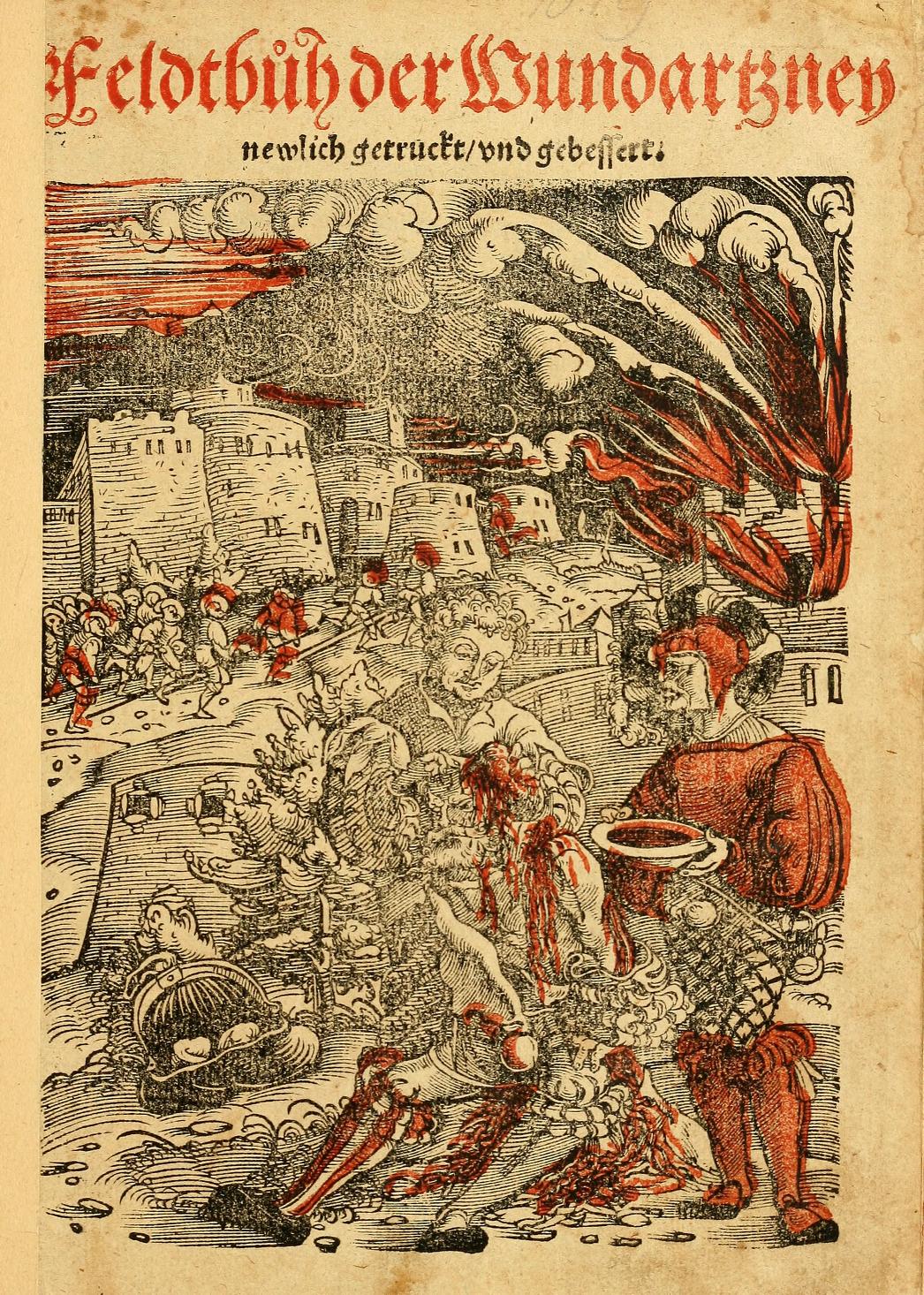
Title of the Feldbuch der Wundartzney by Hans von Gersdorff, 1528, Strasbourg. Countway Library, Harvard School of Medicine. Credit: archive.org
- Feldbuch der Wundartzney newlich getruckt, vnd gebessert... Hans von Gersdorff, 1528. Published in Strasbourg by Johann Schott. The collection of the U.S. National Library of Medicine. Both folded woodcuts are preserved.
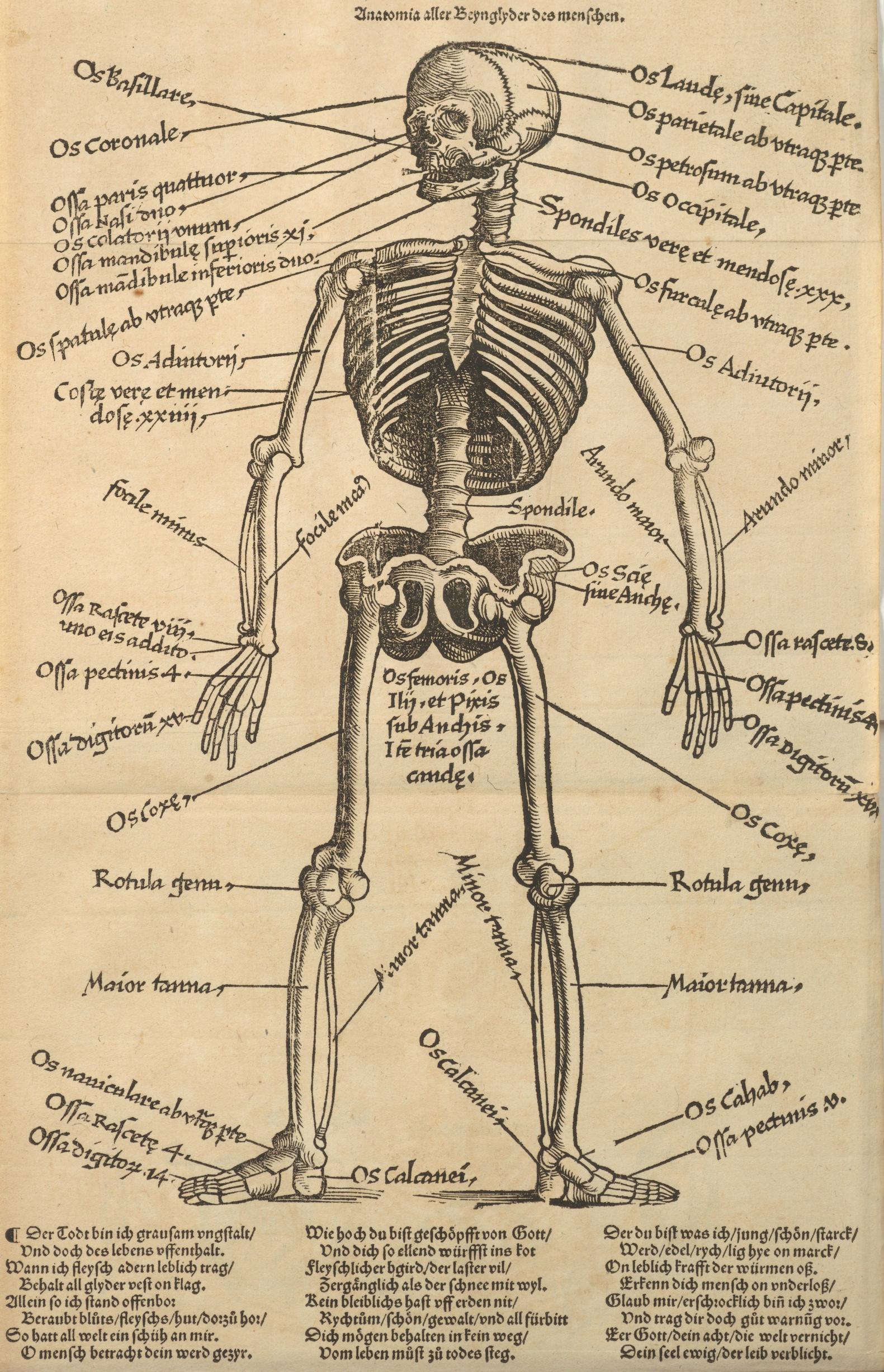
The second fugitive sheet shows a skeleton in frontal view. Edition of 1528 Source: archive.org
- Feldtbuch der Wundartzney, newlich getruckt vnd gebessert ... Hans von Gersdorff, 1528. Contains 6 unnumbered pages, 106 leaves : woodcut title page in red & black, woodcuts and 2 folded fugitive plates with skeleton and viscera-man. The Copy in Wellcome Collection, London, UK.
- Feldbuch der Wundartzney, newlich getruckt und gebessert ... Hans von Gerdorff, Straßburg, 1528. München, Bayerische Staatsbibliothek, Munich, Germany.
- Feldtbuch der Wundartzney, newlich getruckt und gebessert ... Hans von Gersdorff, 1530. Contains 6 unnumbered pages, 106 leaves : woodcut title page in red & black, woodcuts, no folded illustrations. The Copy in Wellcome Collection, London, UK.
- Feldtbuch der Wundartzney. Gersdorff, Hans von, 1542. Augspurg, Stayner. Library of Ludwig-Maximilian University, Munich, Germany.
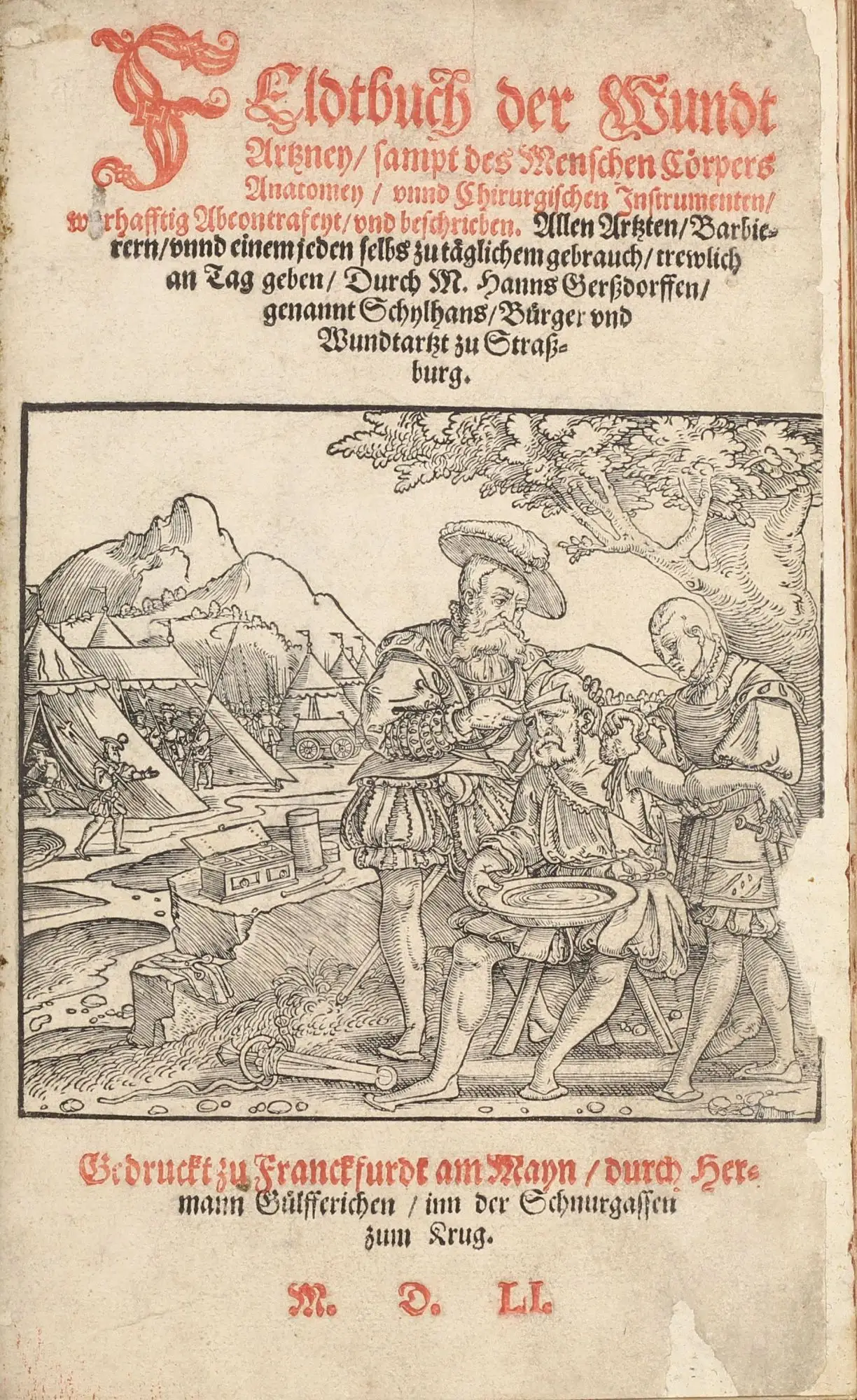
The title page of the Feldtbuch der Wundt Arzney published in Franckfurdt am Mayn by Hermann Gülfferich, 1551. Courtesy: Milestones of Science Books.
Later Works Inspired by the Feldtbuch of Wundtartzney
The influence of Hans von Gersdorff’s Feldtbuch continued beyond its time, inspiring later surgical and medical texts. Among them were:
- The Veltbock within the so-called "Kinderbock", a Low German medical compendium compiled around 1600;
- The compendium Stat und Feldtbuch bewerter Wundtarznei, created by Walther Hermann Ryff and published in 1551 – this book is often considers as a later edition of the original Gersdorff's work.
The recently sold copies of the Gersdorff's Feldtbuch
25 June 2024. The first edition of the "Feldtbuch der wundartzney. Strassburg: J. Schott, 1517." from The Arthur E. Lyons MD Collection of Medical and Scientific Books was sold for US$70,350 incl. premium through the Bonhams New York.
Footnote
The letter “ů” (u with a ring above) is an old variant of the letter “u” that was mainly used in texts written in Middle High German and Early New High German from approximately the 12th to the 17th century. The most important function of “ů” was to eliminate the visual similarity between the letters ‘u’ and “v” in medieval manuscripts and early printed texts — the small circle above the letter made it easy to distinguish between them. In addition, the ring could also indicate that the “u” was long (/uː/), as opposed to a short “u” (/ʊ/). This was not a universal rule for all regions and scribes, but it was a very common practice. Early printers adopted this tradition from handwriting to maintain the clarity of their Gothic-based typefaces. As German spelling became standardized in the 17th and 18th centuries, the use of “ů” gradually disappeared. Interestingly, the length of the vowel sound often came to be indicated by a silent “h” (e.g., “Huhn”).
